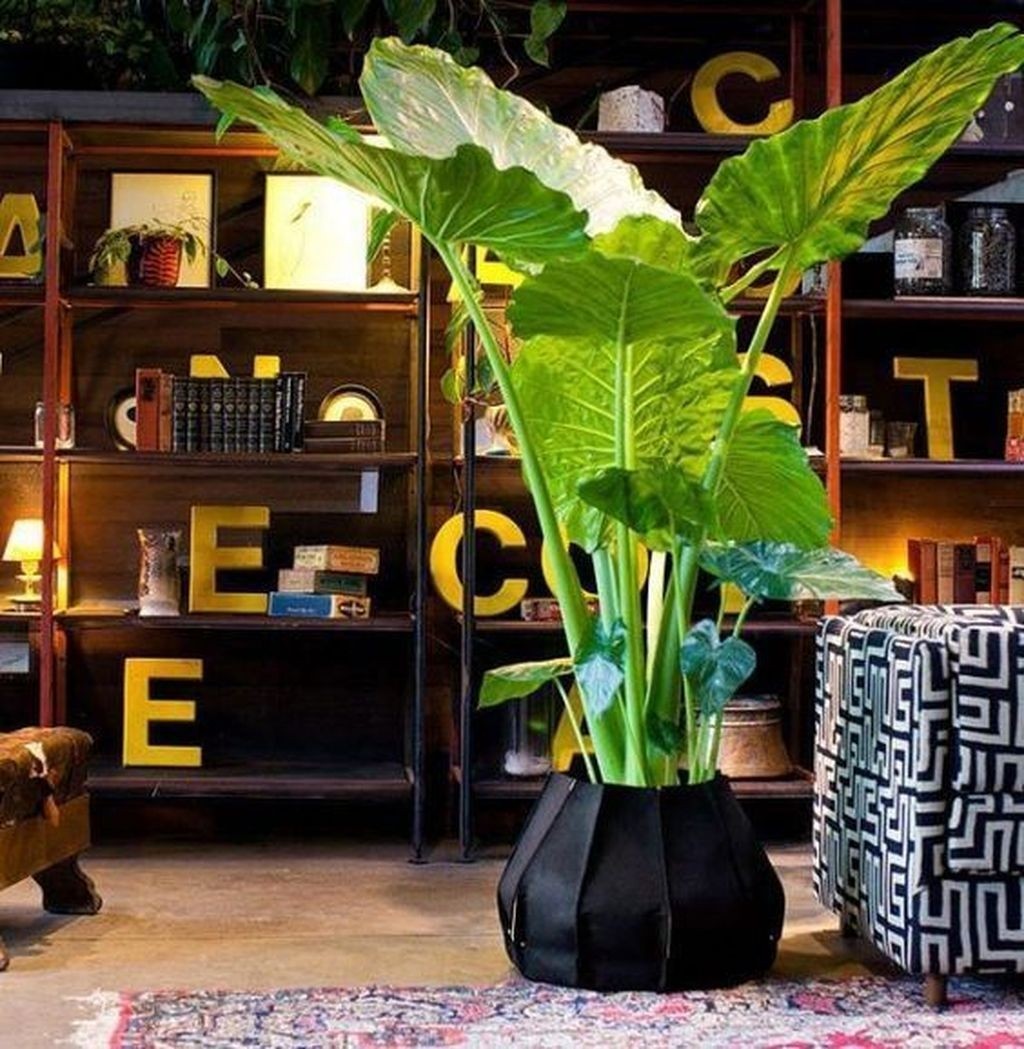Table Of Content

Learn about other types of indoor palm plants to grow as houseplants. Anyone can keep the adorable striped haworthia in their living room. This engaging succulent is like the Goldilocks solution for new plant lovers. Slow growing, it will survive in a variety of indoor temperatures and in most light.
Best Tall Indoor Plants to Liven Up Your Space
Peperomia gives you a range of options with beautiful patterns, shades, and sizes. The most popular species, the watermelon peperomia, is quite famous as a houseplant. The peace lily (Spathiphyllum), known for its bright green leaves and white blooms, is a beauty to behold. "The flowers of the peace lily have been linked to reduced stress levels and improved mood due to their natural calming effect," says Gajdascz. Large plants create a warm and friendly ambiance in any home.

Bloomscape Cat Palm
The leaves of some indoor plants can be toxic to animals, so you’ll want to do your research to keep your four-legged family members healthy. Given the right conditions, these lush and leafy tropical plants can thrive indoors in well-lit areas, making them a bold focal point of any sunny room. In addition to bright light, alocasias also require a humid environment, so keep plants well-hydrated by using a humidifier or misting the leaves regularly. No list of indoor plants with large leaves would be complete without mentioning the Majesty Palm.
The Sill Large Majesty Palm
It can get leggy over time and will benefit from light pruning; wear gardening gloves to keep the sticky sap off your fingers. These large heart-shaped leaves love bright and indirect light when living indoors. Keep the soil consistently moist and mist the plant to mimic the tropical humidity it naturally thrives in. Before you get to shopping (and we’ve gathered a great selection here!), there are a few factors to consider. Light from a window provides just enough bright filtered light and is typically all you'll need to keep many of these species happy and flourishing. Some will even tolerate low light, but be sure to double check before sticking them in a dark corner.
A balanced liquid houseplant fertilizer (5-5-5 or lower) also works well. Feed your dracaena once a month in the spring and summer with a balanced plant food diluted to 1/2 the recommended strength. Regardless of the type of potting mix, make sure that it’s well drained. Just like all palms, fishtail palm has specific nutritional needs. Fishtail palms can tolerate different soil types ranging from loamy, sandy, clay, acidic as well as alkaline.
Ahead, we're shining a spotlight on 20 of our favorite large indoor houseplants and trees to glam up your space and fill those empty corners. Where and how to plant your money treeIf your money tree is outdoors, then make sure it has plenty of room. They can get up to 60 feet tall if left to their own devices, so avoid planting yours beneath any overhangs, trees, or power lines. Indoor money trees, however, will stay much smaller, typically growing only a few feet tall. Large houseplants are appealing for many reasons, but we’ll tackle the two biggest ones.
Experts reveal the best trending houseplant for 2024 - Homes & Gardens
Experts reveal the best trending houseplant for 2024 .
Posted: Mon, 15 Jan 2024 08:00:00 GMT [source]
Fiddle-leaf figs instantly give any room a jungle-like vibe. They grow very slowly, but can eventually reach the ceiling. With a reputation for being finicky, this cold-sensitive rainforest native needs just the right conditions to thrive indoors. Prefers east-facing, sunny windows; unobstructed late day sun in a west- or south-facing window may burn the leaves. Indoor plants with large leaves are a beautiful way to add life and elegance to your interior decor. It is recommended that you speak with a local nursery to determine what plants work best for your home and your climate.
Juniper Bonsai Tree
While not one of the most common houseplants, ficus alii (Ficus maclellandii) is worth hunting down. Agave (Agave spp.) plants are gorgeous in an outdoor setting, but they can also grow happily indoors. The all green type on the left or one with darker maroon, almost red leaves and stems. They don't like drying out completely so try and keep the soil moist where possible.
22 Pet-Friendly Plants That Are Safe for Cats and Dogs - Architectural Digest
22 Pet-Friendly Plants That Are Safe for Cats and Dogs.
Posted: Thu, 08 Feb 2024 08:00:00 GMT [source]
Although it prefers bright light, it will also persevere through dim lighting, temperature fluctuations, and lapses in watering. Tolerates low light, but will grow faster in medium to bright light. So, place your plant in front of a sunny window or in a corner of your room away for the window.
But we’ve made it easy for you with this comprehensive list of the best living room plants, complete with the pros and cons of each. Find the ones that are right for you, and your home will truly become your oasis. The tropical green fronds of the bamboo palm can add a lot of character to your living room. Juts protect the plant from cold drafts and mist regularly. This gorgeous fern with serrated green leaves over a woody trunk makes it an impressive addition to big living rooms. The elongated leaves look like an umbrella and create beautiful scenery indoors while purifying indoor air.
It tends to drop branches from the bottom—and they don't grow back. Tiny houseplants look adorable on end tables and nightstands, but plant lovers know those surfaces fill up quickly. When they do, it's time to graduate to large indoor plants that can stand on their own. Large potted indoor plants aren't necessarily harder to care for, and they give you more bang for your buck. After all, it takes only a few strategically placed oversized houseplants to make your home look and feel like the green oasis of your dreams.

And along with the plants themselves, your hanging pots, tabletop containers, baskets and stands should reflect your home and your personality. Achieving an impressive height of 5-9 feet, it is the plant to have in the corners to make a solid impression. This ornamental aquatic plant forms dense clumps and sprays of foliage. You can grow begonias in your living room for a splash of colors in different shapes and patterns.
The trunks are pliable and some gardeners even braid or twist them to make it look extra appealing. To help find your tall plant match, we have dug up some well-known and not-so-popular but worthy tall houseplants, or let’s just call them indoor trees. No article on tall indoor plants is complete without a mention of the iconic Swiss cheese plant. If you're looking for easy indoor plants to create a stunning display, make sure you include one or two of this popular variety.
They have low water requirements and hence infrequent watering would do good. The amount depends on the season as your cactus can sometimes evaporate more than receive. Ficus plants are rapid growers and they need plenty of nutrients to grow well.
Trailing vines can spill from hanging pots, which has the added benefit of keeping toxic leaves away from dogs. Other options include trailing them along a bookshelf or giving them a moss pole to climb. To keep a bushy shape, simply snip tendrils above a leaf node. Philodendron prefer slightly damp soil but can go a little drier in winter. Choose dwarf varieties like ‘Arbequina,’ ‘Manzanilla,’ or ‘Amfissa’ for growing indoors.
In the meantime, you can give it a leg up by growing it up from the floor on a table or desk to create "height". They're straightforward, grow fast and only have minimal spines. Perfect for that full sun spot where other plants struggle. They don't need much light to do well, and the stems underneath the foliage are unusual and add a lot of visual interest. It reminds me of a bamboo palm but with much more of a bamboo look about it. Worth checking out if you like palms but want something a little rarer.

No comments:
Post a Comment